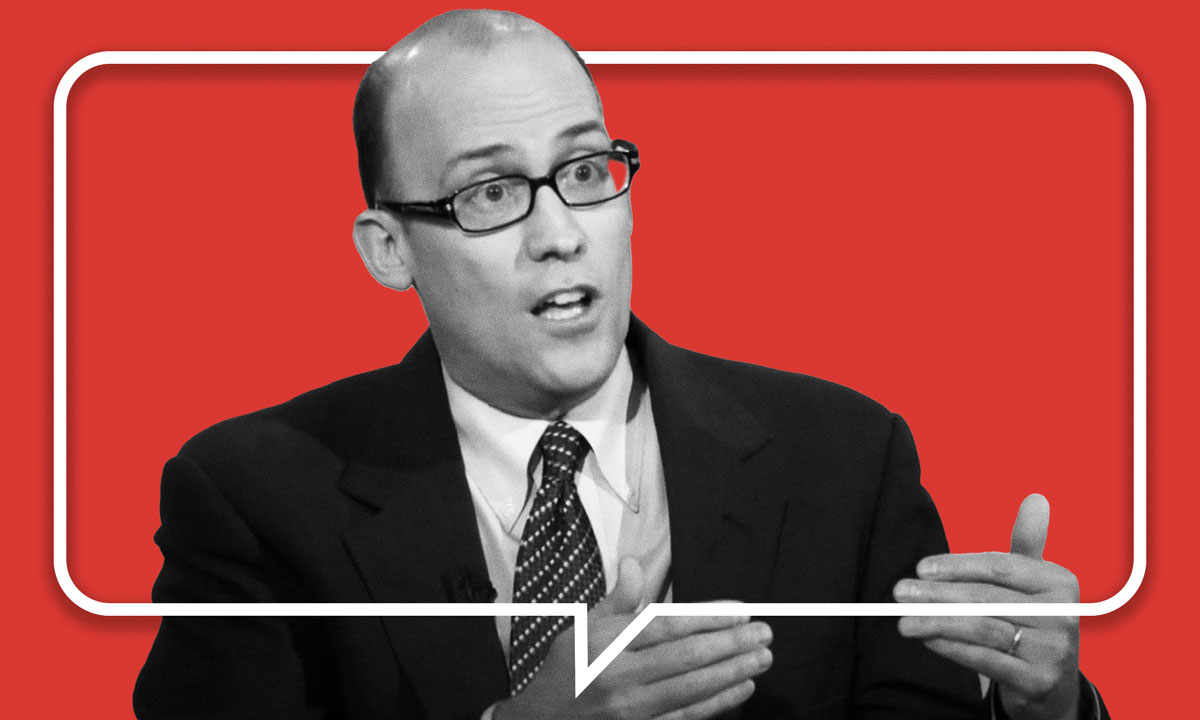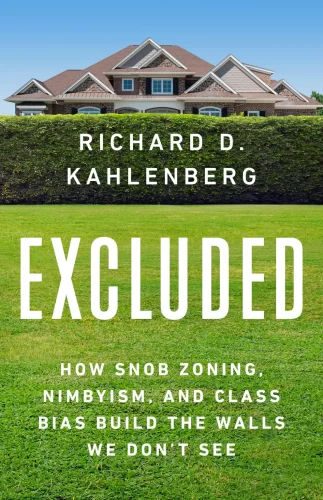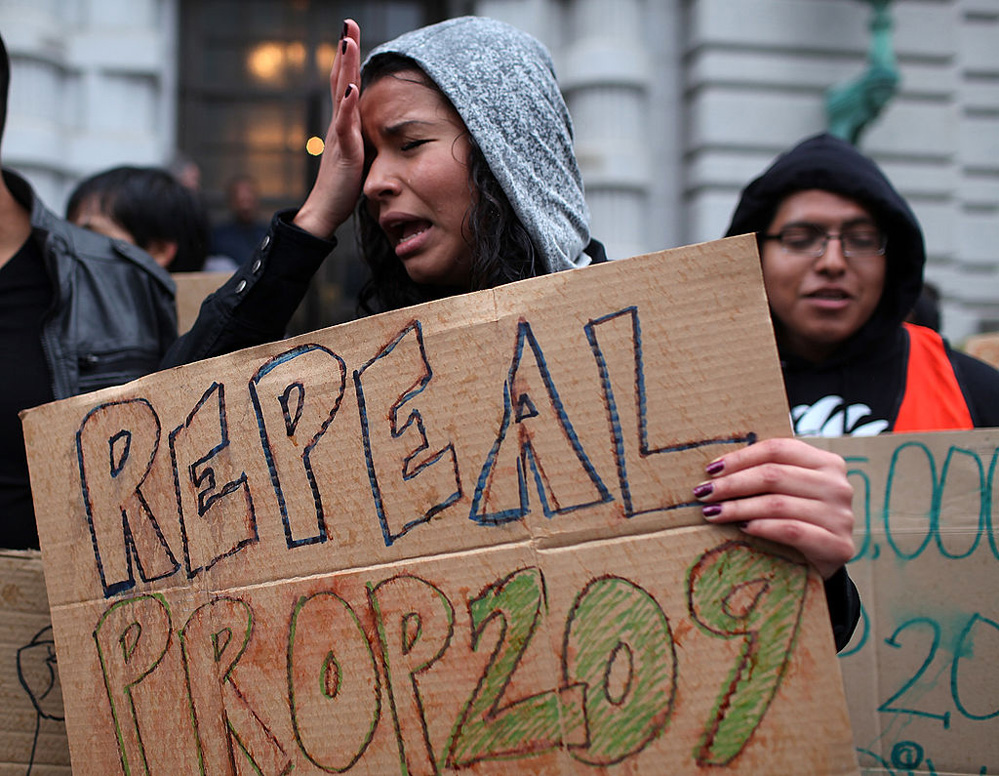74 Interview: Richard Kahlenberg Says Liberal ‘Elitism’ Is Hurting School Equity
The prolific author and researcher on how exclusion — in neighborhoods and colleges — divides Americans by class.

Get stories like this delivered straight to your inbox. Sign up for The 74 Newsletter
When the Supreme Court delivered its landmark ruling prohibiting the consideration of race in college admissions, Richard Kahlenberg was the rare liberal intellectual who celebrated.
A prolific researcher at Georgetown University’s Center on Education and the Workforce, Kahlenberg didn’t just welcome the end of affirmative action as we knew it — he served as an expert witness for the suit’s plaintiffs, Students for Fair Admissions, in their successful efforts to strike down diversity plans at elite colleges as discriminatory and unconstitutional.
The 6–2 opinion represented the fulfillment of a generation of work for Kahlenberg, the author of 18 books ranging from personal memoirs to biographies to education policy tomes. For the last few decades, he has waged a long and sometimes unpopular campaign to broaden the focus of educational integration to make room for class, which he says represents the crucial divide in American life. Assembling racially heterogeneous students of identically middle- and upper-class backgrounds to learn together, while cordoning off the children of the working class and the poor, is the surest way to reinforce the advantages of the wealthy, he has argued.
Just months after his argument carried the day at the Supreme Court, Kahlenberg is exploring a different facet of inequality in his new book, Excluded: How Snob Zoning, NIMBYism, and Class Bias Build the Walls We Don’t See.
Released in July, Excluded details how “exclusionary zoning practices,” such as bans on apartments or mandates for single-family homes, are used to restrict the supply of housing and further segregate neighborhoods as more hopeful buyers are priced out. What’s more, since most families choose where to live based at least partly on the quality of local schools, such tactics also push most of the top-performing public schools in the country out of reach of poor and working-class people.

It seems unlikely that convenings of zoning authorities will become as heated as school board meetings have in recent years. But to Kahlenberg, the NIMBY (“not in my backyard”) instinct is of a piece with Harvard’s now-banned admissions policies: a means of capturing opportunity by those with the resources and wherewithal to grab them.
In a conversation with The 74’s Kevin Mahnken, Kahlenberg spoke about the failure of ‘70s-era busing, his abiding admiration for Sen. Robert Kennedy, and what he calls liberalism’s “elitism problem.”
“Harvard gave large preferences based on race and created a majority-minority class, which I think is a wonderful thing,” he said. “But it also had many, many more wealthy students than low-income students. We’re beginning to see the ways in which racial preferences have propped up a much larger system that is biased against working-class and low-income people.
This conversation has been edited for length and clarity.
The 74: How do the main themes of this book — zoning and access to housing — relate to schools?
Richard Kahlenberg: I come at housing from the perspective of education, and the architecture of educational inequality rests on two pillars. One is exclusionary zoning — bans on apartments, minimum lot sizes and the like — which keeps people apart by class and race. The other is mandatory neighborhood assignment for most students. Essentially, zoning rules determine who gets to live where, and that determines where children are allowed to go to school.
“Maybe I’m a slow learner, but I should have gotten into housing policy years ago. Housing policy is school policy.”
There are exceptions to that in the form of public school choice programs that try to disentangle residence and school assignment. I’ve long been a supporter of those programs, but you bump your head against the reality that more than 70 percent of American schoolchildren attend their neighborhood public schools.
Maybe I’m a slow learner, but I should have gotten into housing policy years ago. Housing policy is school policy.
Reading the book, it made me think that education journalists should spend almost as much time following the agenda of local housing authorities as we do focusing on school boards.
You see an example of that in Montgomery County, Maryland, where there was a kind of natural experiment of what matters in improving the opportunities for low-income students. Around 2010, Heather Schwartz at the RAND Corporation examined two strategies that were pursued in this liberal, diverse county right outside of Washington, D.C.. One was to spend $2,000 extra for each pupil in high-poverty schools, for good things like extended learning time and reduced class size in early grades.
At the same time, a local inclusionary zoning law mandates that when builders develop a certain number of units, they have to set aside a portion for low-income and working-class families. In essence, there was a random assignment of low-income students to different public housing units, which are spread throughout the county. Some of those students lived in the higher-poverty areas and received the extra $2,000 at school; the other group lived in more affluent parts of Montgomery County and didn’t receive the extra funding, but did attend schools with lower levels of poverty.
Over time, Schwartz found that the housing intervention, which resulted in economic integration, had a far greater effect on academic achievement than the school spending intervention. In seven years, the math gap was cut in half between low-income students and middle-class students, the reading gap was cut by one-third. It shows that housing policy matters enormously to student outcomes.
Is it striking to you that land use is mostly a submerged issue in the K–12 agenda? After all, neighborhood selection is the way most people exercise school choice.
Yes, people of means very often choose neighborhoods based on the strength of their schools. And everyone should look for what’s best for their kids. The problem comes when government actively excludes those of lesser means by rigging zoning laws to prevent lower-income people from living in certain neighborhoods.
So I don’t have any qualms with parents choosing housing in this way. I have a big problem with laws that effectively keep working-class families from exercising that same choice.
Do you agree that housing laws have gained this importance in part due to the Supreme Court’s ruling in Milliken v. Bradley, which made it extremely hard to mandate busing between cities and their surrounding suburbs? You’ve explored this fairly deeply in your writings about the socioeconomic integration of K–12 schools.
Busing became deeply problematic in the North, and it mostly worked in the South. The difference was that in the South, you often see countywide school systems, so there was no place to flee. There is strong research to suggest that desegregation in the South had a much more positive effect on the achievement of African American students than it did in the North.
And that brings us right back to the power of socioeconomic status. The research always suggested that the reason African American students did better in racially integrated schools was that, on average, whites had higher socioeconomic status.
So in the South, there was cross-class and racial integration precisely because the districts encompassed cities and suburbs. In the North, that wasn’t often the case, and after Milliken, the power of racial integration to produce class integration diminished considerably. To be clear, I think there are social benefits to racial integration, even if it doesn’t increase academic achievement. It’s a good thing for children, but if you’re trying to raise academic achievement, it’s the socioeconomic mix that matters more than the racial mix.
The other piece of this is compulsion. Today, sophisticated integration plans — which, for legal and educational reasons, are built more on class than race — tend to rely on incentives and choice rather than compelling people. It’s because families with means are able to rebel, either buying out of the system or moving further out.
Intriguingly, the racial demography of urban areas has changed quite a bit in recent years, with both suburbs and inner cities becoming more diverse than they were in the ’70s and ’80s. Is the same true of socioeconomic status?
Black-white segregation has declined by about 30 percent since 1970. While we haven’t made enough progress on racial segregation, and it’s still really prominent in many cities, we’re headed in the right direction. But Sean Reardon’s research at Stanford shows that, by contrast, income segregation has roughly doubled over the same time period.
There have been two periods in this country when exclusionary zoning has accelerated. The first arrived in 1917, when the Supreme Court struck down racial zoning in Buchanan v. Warley. Black people were explicitly prohibited from living in white neighborhoods under these plans in Baltimore, Louisville, and elsewhere, and the Court said that was a violation of the Equal Protection Clause. But very quickly, towns figured out they could achieve much the same result through economic zoning. You know, “You’re welcome to live in this neighborhood so long as you can afford a detached, single-family home on half an acre of land.”
The second came in the 1970s, and its timing was suspicious in that Congress had just passed the Fair Housing Act. Communities doubled down on exclusionary zoning during that time as well, though it was less effective because by that time, there was a growing African American middle class. In some cases, they were able to buy homes in neighborhoods that were more affluent. [U.S. Senator] Cory Booker, whom I interview in the book would be one case; his parents were executives, and because of the Fair Housing Act, they were able to move to a Newark suburb called Harrington Park. He was able to attend strong schools and go off to Stanford, but he also had lots of friends and cousins who weren’t so economically fortunate. They remained behind.
The main point is that the two big expansions of this practice of exclusionary zoning came in response to advances for civil rights.
We’ve seen some modest wins recently for the YIMBY [“Yes in My Backyard”] movement in places like California, but so many homeowners are really resistant to the idea of densifying their communities. Isn’t it likely that flooding resources to poor schools, while apparently less effective than socioeconomic integration, would be the easier way to effect change?
I do support putting more money into high-poverty schools, and I don’t think you have to choose between improving them and integrating them. You can do both.

My concern is that maybe 95 percent of education reform is about trying to make separate-but-equal more workable. I don’t want to abandon efforts to invest more resources in high-poverty schools, but we need this complementary strategy as well. For one thing, if your goal is raising achievement and the prospects of disadvantaged kids, a lot of evidence shows that it’s more effective to integrate than to provide extra resources.
Secondly, the two are connected in a reciprocal relationship. In theory, yes, you could try to invest tremendous amounts of money in under-resourced schools. But you’re asking the political system to support an effort whereby families with the least political power command the greatest resources. We do see that in states like New Jersey, where a state court mandated extra funding for schools with high concentrations of poverty, and in a few other liberal communities like Montgomery County. But it’s not the rule.
In other words, integration is politically difficult, but so is flooding poor schools with massive resources. The other thing is that when we take housing policy off the table, we miss the importance of neighborhoods in predicting life chances. Because it’s not just academics and schooling, it’s about who you know in your neighborhood and what social connections they have that could benefit you down the line. That social aspect is another reason not to pursue a neo-Plessy [v. Ferguson, the Supreme Court decision authorizing separate, but equal public accommodations] approach of accepting segregation and trying to do the best you can with it.
You’ve already mentioned your support for public school choice policies like diverse-by-design charter schools. Do you think the rapid spread of Education Savings Accounts in red states is likely to temper or accelerate segregation along lines of race and class?
That stuff is a big step backward. My former Century Foundation colleague, Halley Potter, did an analysis of whether private school vouchers increased or decreased segregation. Her answer was that they increase it, and certainly that was the original motivation of many of the early proponents of voucher programs in the South — to create more segregation, not less.
Here’s a good explanation for the necessity of public school systems. I wrote a biography of Al Shanker, the longtime leader of the American Federation of Teachers. One of the stories I learned writing it took place at a private meeting of education mucky-mucks. At a certain point, the president of Notre Dame stood up and asked, “What is the rationale for public education in the first place, as opposed to people just taking their money to a system of private schools?” There was a long silence, after which Shanker said, “The reason we have public schools is that they teach kids what it means to be American.” And it’s true that the charge of public schools is to instill the liberal democratic values that make our nation different from a lot of others, even if they don’t do it perfectly.
“In theory, yes, you could try to invest tremendous amounts of money in under-resourced schools. But you’re asking the political system to support an effort whereby families with the least political power command the greatest resources.”
Private schools have different purposes, which usually include deepening a particular religious faith. That’s fine, but their purpose is generally not to create better citizens. I know there are studies that claim private schools do a good job imparting the values of citizenship. I’ve got some problems with some of those studies, but the point is that public education’s rationale is to make possible the continuation of our experiment in self-governance. I don’t want to give up on that lightly.
Robert Kennedy was a hero of yours, and you invoke his philosophy in the book as a corrective to what you call liberalism’s “serious problem with elitism.” What do you think he would have made of the end of affirmative action in college admissions?
Bobby Kennedy is a touchstone for me. In the 1968 presidential campaign, he made the observation that we have deep racial inequalities in this country, but that underneath them are even bigger class divisions that often go ignored. We use race as a proxy for class in a lot of political conversations.

That tendency serves the interest of my fellow highly educated liberals. If you take the example of affirmative action, Harvard gave large preferences based on race and created a majority-minority class, which I think is a wonderful thing. But it also had many, many more wealthy students than low-income students. We’re beginning to see the ways in which racial preferences have propped up a much larger system that is biased against working-class and low-income people.
At Harvard, 71 percent of the African American, Hispanic, and Native American students came from the richest one-fifth of the African American, Hispanic, and Native American population nationally. White and Asian students were even wealthier. There was even a way in which racial preferences propped up legacy preferences, in that people who supported lowering admissions standards for enormously advantaged applicants could point to racial diversity and say, “Look, the system’s fair. There are lots of different factors we take into account.” Now we see that Wesleyan recently abandoned legacy preferences, and I think a lot of other elite universities are going to give up that unfair, ancestry-based privilege.
“One might expect that politically conservative areas would have more exclusionary practices — because, for instance, voters in those areas are more likely to support an exclusionary wall between the United States and Mexico. But in fact, there is substantial research to suggest that the worst forms of exclusionary zoning are in politically liberal areas along the coasts.”
On elitism, Fareed Zakaria has written that the cardinal sin of the Right is racism, and the cardinal sin of the Left is elitism. One might expect that politically conservative areas would have more exclusionary practices — because, for instance, voters in those areas are more likely to support an exclusionary wall between the United States and Mexico. But in fact, there is substantial research to suggest that the worst forms of exclusionary zoning are in politically liberal areas along the coasts. Even within states, there are more acute forms of exclusionary zoning in politically liberal communities.
Why would liberals, who generally consider themselves openhearted and inclusive of people of color and LGBT individuals, be exclusionary in this way? The more benign explanation is that liberals support environmental protection, regulation, and due process, all of which tend to make it harder to build housing and other major projects. At the very least, those have been weaponized by liberals to exclude.
And there’s a less charitable explanation. As Democrats became the party of the highly educated, there were both good and bad things that came with that. Some experimental research suggests that people with high levels of education have more favorable attitudes towards traditional targets of prejudice. That’s a good thing, but at the same time, highly educated people exhibit many more stereotypes and negative attitudes toward those with less education — the folks that Hillary Clinton famously described as “deplorable.” I think liberals like me need to take a close look in the mirror on some of these issues of class bias.
Do you think self-interest is playing a role as well? In my interview with Tony Carnevale, he basically said that most schools don’t believe they can afford to be more class-diverse. Obviously, many people also fear that new housing will lower their own home values.
Absolutely. The reason why universities have sought racial diversity without class diversity is that it’s cheaper. You can devote more resources to faculty salaries, expanded administration, new buildings, and the rest of the things universities want to do.
“Highly educated people exhibit many more stereotypes and negative attitudes toward those with less education — the folks that Hillary Clinton famously described as ‘deplorable.’ I think liberals like me need to take a close look in the mirror on some of these issues of class bias.”
But there’s good news from states [such as California, Florida, and Michigan] that have previously banned affirmative action. The evidence suggests that universities won’t just give up on racial diversity; those with resources will reach into their pockets and provide more money to expand socioeconomic diversity as a means of indirectly creating racial diversity.
During the recent Students for Fair Admissions litigation, the University of North Carolina said, “We can’t afford to expand financial aid. It’s not a viable alternative to using race in admissions.” Lo and behold, after the Supreme Court ruled, UNC announced that it will significantly expand their financial aid. And kudos to them for finding the money necessary to foster racial diversity!
Over time, universities will develop a number of new liberal programs to ensure that racial diversity is achieved — by giving a break to economically disadvantaged students, by expanding financial aid, by eliminating unfair preferences for the children of alumni. Then we can end up with both racial and socioeconomic diversity.
You’ve naturally got to be pleased to have prevailed in court in your capacity as a witness. But how is this ruling going to lead to more egalitarian colleges and universities? What needs to happen next, whether in colleges, statehouses, or Congress?
There’s a paradox in public opinion polling. On one hand, Americans are deeply opposed to counting race as a factor of who gets into college. Pew found something like 74 percent of respondents opposed to using race. At the same time, Americans want their universities to be racially and economically diverse, and they strongly support other efforts — such as giving an edge to students from low-income backgrounds — in order to create diversity.
When racial preferences were banned in states like Texas and Florida back in the ’90s, Republican governors worked with state legislatures to come up with a variety of new programs. That is to say, states and universities did not simply give up on racial diversity when they couldn’t use race in admissions, because the political system does not want to see segregation in elite higher education.

The other dynamic is that the Republican Party is increasingly the party of the white working class. White working-class people have been angry about affirmative action for a long time. But suddenly, universities are going to start saying, “We’re going to provide a meaningful break to working-class students of all races.” I find it hard to believe that Republicans will oppose those efforts at the very moment that their political base becomes eligible for class-based affirmative action.
It seems like your emphasis on integration raises questions about the nature of what we call “school quality.” If the socioeconomic background of your classmates is a major factor in determining what you can learn — as the Coleman Report also found way back in the ’60s — then should we order our priorities to pursue residential and school integration over more conventional school improvement efforts?
I would broadly agree. If the dual purposes of public education are to create social mobility on the one hand, and social cohesion on the other, then we want to use housing policy and public school choice to bring kids of different backgrounds together. Economically segregated schools oftentimes defeat well-intentioned education reform efforts.
“There’s a paradox in public opinion polling. On one hand, Americans are deeply opposed to counting race as a factor of who gets into college. At the same time, Americans want their universities to be racially and economically diverse, and they strongly support other efforts — such as giving an edge to students from low-income backgrounds — in order to create diversity.”
If you care about curriculum or teaching, as I do, having a system segregated by class makes it more difficult to provide equality. You want all students to be exposed to a good curriculum, for example, but we know that there are many fewer advanced classes offered in high-poverty schools. We also know that some teachers consider it a promotion to move from a high-poverty school to a middle-class school.
You can chip away at that. I support paying bonuses to highly qualified teachers who agree to teach in high-poverty schools, and I support the expansion of AP classes in high-poverty schools. But at the end of the day, those efforts ignore the essential reality that Coleman detected in his study, which grew out of the Civil Rights Act of 1964: Separate schools for rich and poor are rarely equal. Rather than putting our heads in the sand and ignoring that central finding, which has been repeated and repeated again since Coleman, I think we need to face it head-on.
Get stories like these delivered straight to your inbox. Sign up for The 74 Newsletter

;)
